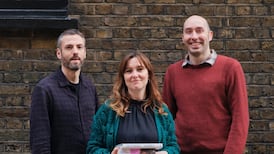There was no "big bang" in Dublin, no one event that projected the capital or the State into the international news coverage of the celebrations marking the turn of the millennium.
But according to the Millennium Committee chairman, Mr Seamus Brennan, there was never going to be. Any criticism that Ireland's or Dublin's midnight celebrations were not big enough is misplaced, he says. "This was never going to be boiled down to midnight." His committee was never about creating a "big bang" to compete with telegenic events from around the world. Instead, he maintains, there were dignified ceremonies around the State, while projects have been set in motion which will survive long after the New Year's Eve party is over.
For months, Mr Brennan has been explaining that the official millennium celebrations were going to be somewhat different from those planned for elsewhere. The idea was not to concentrate on having an extravagant event at midnight, but to attract broad public participation in smaller community events, as well as to fund a number of lasting projects.
Mr Brennan says the Government considered having one major project as a centrepiece to its efforts to mark the new millennium. "We advertised for a big project, but no one project stood out."
He doesn't agree that the Government should have tried harder to find some major construction project to mark the occasion, as the British did with the Millennium Dome. "No matter what we did, three-quarters of the country would have hated it," he says, citing the example of the plan for the "Spike" monument in the centre of O'Connell Street.
Instead, he said, they had decided on a number of "nice, decent things" rather than some major construction. The idea was to allow people to enter the spirit of the occasion, "while at the same time recognising its historical significance and the strong Christian link".
There were five flagship projects: The Last Light ceremony; the growing of an oak tree for every household in the State; the purchase of the Battle of the Boyne site by the State; the "Children's Hour" through which people gave their last hour's wages of the old millennium to children's charities; and the purchase and renovation of lighthouse keepers' cottages around the coastline.
He said the cynicism and sneering at the Last Light ceremony had dissipated shortly before New Year's Eve, with enormous numbers of people demanding candles so they could participate in the event. In the end, said Mr Brennan, the idea of a simple ceremonial lighting of candles as the sun set on the old millennium for the last time was a great success. "In communities, factories and streets people took part in their own small ceremonies. Yes, there were still cynics, but I'm not hardened enough not to be moved by 25,000 people lighting candles in Merrion Square as the sun went down with Ronan Keating singing She Moved Through the Fair."
Mr Brennan rejected criticism that there was no one "spectacular" event in Dublin at midnight, as there was in London, Paris, Sydney, Rio de Janeiro and countless other major cities. Some 40,000 people attended the open air concert in Merrion Square while elsewhere, hundreds of thousands took part in smaller ceremonies, according to the committee.
If you take away the fireworks from other locations around the world, he asks, what is left? "I think we will have a lot more to show. We are funding a new hospice in Donegal, built bridges over the Lee, the Corrib and the Liffey, there is the money going to the Children's Hour fund and the other social and environmental causes. That's a lot more spectacular than fireworks."









